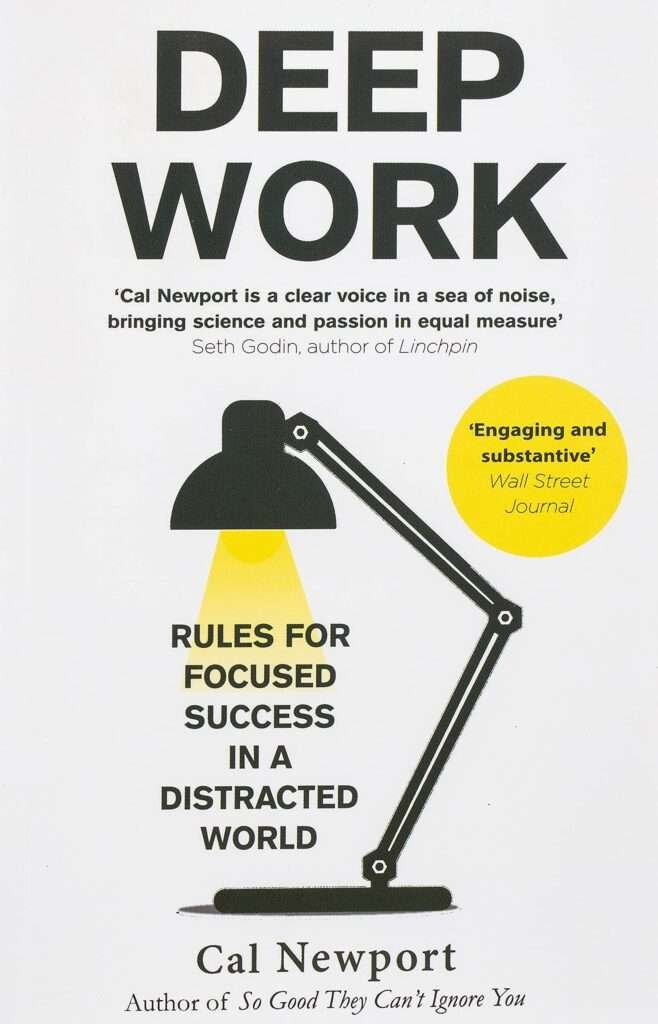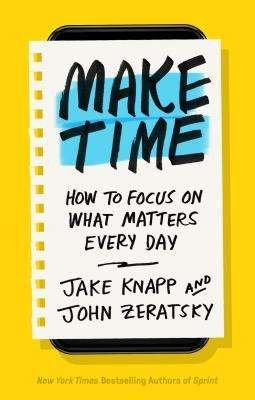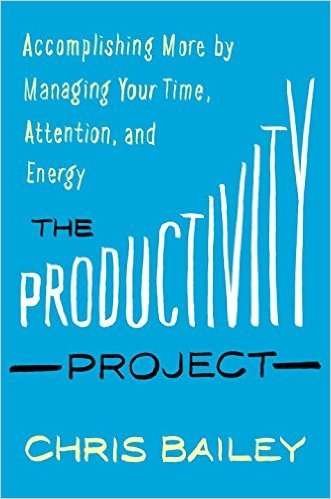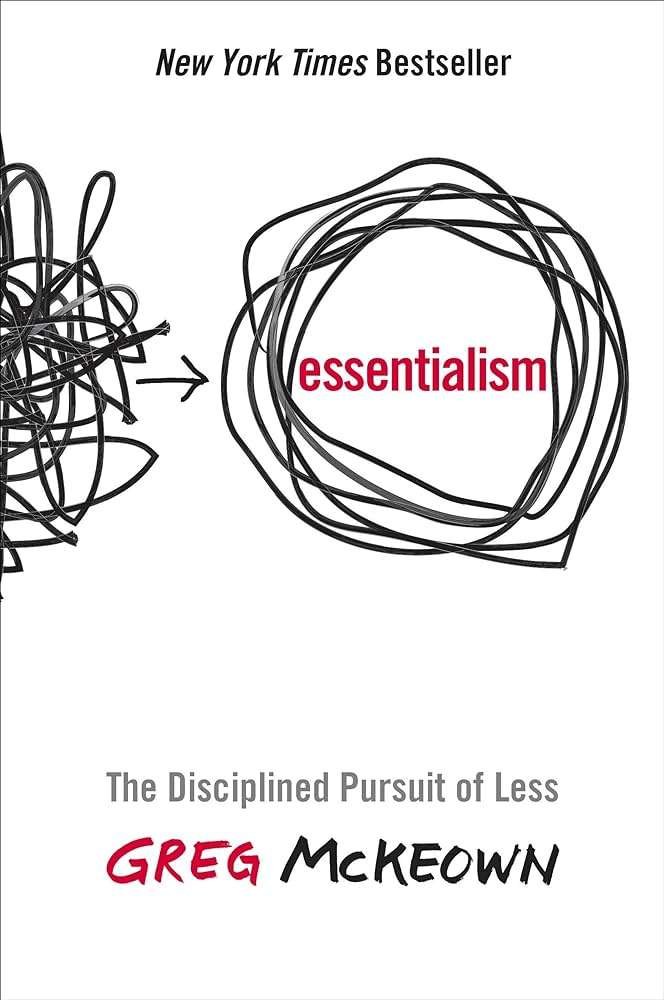Introduction
With the world we live in today — filled with speed, constant distraction and demand for multitasking — time management has become one of the most vital skills needed to do well at both your personal goalsand professional career. The Time Blocking Method is an excellent way to assign individual times with the right task or activity — so each one gets its share. You can increase your productivity, lower stress and make a dent in whatever it is you are working towards by dividing up your day. Time Blocking: the Complete Guide to Personal and Business Productivity itiventures time management Yes, I Want More!

Time Blocking Method
The Time Blocking Method is NOT just a way to schedule your day but rather, it’s establishing the mindset around doing focused work — planning with discipline and living with intention. Read on to discover six must-reads that will help you in time blocking when planning your day:
1. “Deep Work: Rules for Focused Success in a Distracted World” by Cal Newport
Summary:
Deep Work by Cal Newport is the bible on making sure you harness your cognitive power and own your productivity. Deep work is Newports term for the ability to focus without distraction on a cognitively demanding task, this skill is becoming increasingly rare but we also know its one of the true strengths that allows us add value in our current economy which uses knowledge as currency. In the book it is posited that deep work, to a large extent, determines our ability to master difficult things and produce at an elite level (in terms of both quality and quantity) in almost any profession.
Key Lessons:
- Time Blocking for Deep Work: Newport endorses assigning specific chunks of time wholly to deep work. These are the times when you unplug from everything — emails, social media and meetings to work on one single task at a time. In order to get into this state of deep concentration, there is a good chance that you will have simply sit down and put some work in.
- Bar Exam Preparation: Rituals and Routines – Newport recommends developing rituals that indicate the start of a deep work session. Maybe it is an ritual of configuring your space to work, perhaps following a specific pre-work routine or maybe working at a special place. These rituals allow you to get into a state of focus faster.
- Deep work vs Shallow Work: Unlike deep work, “shallow work” are non-cognitively demanding tasks that tend to be time-sucking logistical-style chores and do not advance your standing in the profession. According to Newport, you can expedite such activities by either giving them out (delegating), carrying them using a process(automation) or only running those tasks during set blocks of time(batching), which will give you more time for deep work.
Practical Application: To implement Newport’s methods, you would categorize the work which needs focus and allocate fixed hours daily for these activities. Some common approaches include protecting the first two hours of your workday for deep work before doing email or meeting, creating theme days with a single focus (e.g., twice-weekly no-meeting days), adding sustained breaks to create space and reduce context switching between tasks in the day, as well timing sleep around important meetings. Set up an appointment with yourself (or use tools like time blocking calendars or planners) for these times and protect them fiercely from interruptions.

2. “The 12 Week Year: Get More Done in 12 Weeks than Others Do in 12 Months” by Brian P. Moran and Michael Lennington
Summary:
The 12 Week Year introduces a paradigm shift on managing your time – it advocates switching from an annual work cycle to shorter cycles. Instead of making one year to the next goals, Moran and Lennington propose dividing your actual year into twelve-week cycles where each cycle is a “year” in which you accomplish all guided targets. This shorter time frame, with the right progress indicators in place is that It pushes you to do what really matters and discard everything which are just activities Arianism on how good does it feel.
Key Lessons:
- Execution: Time Blocking The authors argue that disciplined execution is the lynch pin for accomplishing your goals in just 12-weeks. Committing to time blocking is an important way of doing this, as it means you can allocate specific places in your schedule when certain activities that will propel you towards success. This is how you can make sure you work on what truly matters without being distracted.
- Weekly Planning and Accountability: The weekly planning session is another cornerstone of the 12 Week Year. This is when you check in on how you did, set a plan for next week and put down time blocks to do each of the big-gain activities. And this is not only a great way to keep yourself accountable, but it also helps you remain on track with your goals.
- Distraction Free: The book calls for a very singular focus on your work, and sets out to rid the distractions or time-sucking activities that keep you from understanding your desired goals over these 12 weeks. It serves to help create a structure that enables you to focus your time and energy where it needs to be spent.
Practical Application: Practical Application of 12 Week Year I have worked with the method in this way and broke down my annual goals into things that could be accomplished each quarter (or every 3 months) which is a perfect length for standard project time blocking. At the end of each week, take time to reflect on how you are doing and adjust your calendar so that you can continue consistently with this routine. It works because it maintains a sense of urgency and pushes you to focus on what actually matters most.

3. “Make Time: How to Focus on What Matters Every Day” by Jake Knapp and John Zeratsky
Summary:
This book provides a playfully novel approach to rethinking how we manage what is most dear: our time. Authored by two ex-Google designers, this book describes a system to give yourself more of your time back and prioritize what matters most. The Highlight Knapp and Zeratsky lay out the practice of focusing on one thing you want to accomplish each day, and some straightforward ways in which you might make sure that gets done.
Key Lessons:
- Make Time: Highlight, Laser, Energize, Reflect Make time has at its core the highlight method of selecting one thing you want to get done each day and carving out a specific block in your google calendar that is scheduled as sacred space. The authors take a more practical and implementation approach, calling it the “Laser” technique (no distractions), “Energize” to unlock your energy source in body/mind, as well as having you reflect on these learnings daily with reflections.
- Design Your Day: Knapp and Zeratsky tell readers to build their day around a Highlight, in addition to using time blocks so you can protect this crucial block of time from being swallowed up by lesser tasks. It is the romantic way of saying that take charge on your day, dont let the days push you.
- Breaking the Busy Trap: This is a major theme of this book — it’s about not getting stuck in what Damon calls “the busy trap” where you are doing things that make you feel like me met or productive but, really do nothing to move your goals forward. It keeps you out of this trap by working on impactful, meaningful work.AutoScaleMode
Practical Application: Find your Daily Highlight by identifying the one thing you can do each day that will make it a win. Spend an hour (or more) on the task, and focus as much of that time block purely on getting this done without interruption. Also, review at the end your day and think about what worked as well did not work to adjust for tomorrow.

4. “The Productivity Project: Accomplishing More by Managing Your Time, Attention, and Energy” by Chris Bailey
Summary:
The Productivity Project by Chris Bailey is a documentation of the authors one year experiment trying out different productivity tips to find what works best. Filled with practical tips for how to manage your time, attention and energy wisely (with many benefits leaned towards the importance of Time Blocking).
Key Lessons:
- Time Blocking for Managing Your Energy: Bailey explains that productivity isn’t just about time management, but also energy management. Assignment: Match your Timeblocks with the Peaks of Energy for Similar Types of Tasks By matching up similar, effective type tasks to be on their own side at times when you naturally feel energetic and tied Example: do this is easiest in blocks that would also tie back to days or entire weeks)
- Balanced Work and Life: One of the aspects that is deeply dissected in this book is leveraging time blocking, either to balance work with life. Bailey recommends blocking time for work and for your own activities — play, relaxation, connection.
- The Power of Single-Tasking: By single-tasking — actually focus on one thing at a time in a given block of time, as opposed to multitasking. This has the effect of making your process more efficient and alleviating that mental fatigue we all know comes along with switching from one task to another.
Practical Application: To utilize the insights from The Productivity Project, begin by plotting your affinities for energy at different times in the day. Block this time, preferably when you are at your peak in energy to do the really nasty jobs! Also, schedule personal activities and create time blocks for yourself to strive a work-life balance.

5. “Time Management Magic: How to Get More Done Every Day and Move from Surviving to Thriving” by Lee Cockerell
Summary:
Time Management Magic- Lee Cockerell, Former Executive Vice President of Walt Disney World Leveraging his experience managing one of the most complicated operations in the world, Cockerell manages to provide a reductive time management methodology based around simple planning and prioritization with some added practice from block (allocated) times.
Key Lessons:
- Time Blocking: Over the years of managing a variety of tasks both at work and at home it has become apparent that time blocking is an invaluable tool to keep me on track. He suggests that when you schedule what time of day to do those tasks — or anything else, for that matter — it will make your days more productive and less stressful.
- Prioritize: The book talks about prioritizing the things that are urgent and important so you can focus on what matters most. To do this, Cockerell suggests using time blocks and starting your day with the high-priority tasks that are most important to tackle.
- Succession Planning: Cockerell shares the significance of planning — every day, weekly and monthly. However, by planning and blocking time for all of the most important activities in your business, you can be confident that nothing will slip through the cracks.
Practical Application: Start by writing a better day plan, week plan and month plan. Keep it to 2-3 focus priorities per new period so you can get through your items on the list(speed matters). Use time blocks to schedule periods for each task, so you are continuously working on the most important things. Check in and update your plan along the way to make sure that you are on track.

6. “Essentialism: The Disciplined Pursuit of Less” by Greg McKeown
Summary:
Essentialism by Greg McKeown — Complimentary Read the book on what really matters and eliminate all else. The book asks you to live an ordered life where everything that demands time and energy from you should fall in the highest return activities, according to investment theory. If you are familiar with this, it lines up perfectly with what time blocking is in the way that sets a schedule for your day such as focusing on the important stuff and trimming out all of then bullshit.
Key Lessons:
- Pareto principle / Essentialism: As McKeown puts it, focus on the vital few; sue no to things that are not essential. Time blocking is a method for protecting your schedule from distractions, so that you use the time in ways that are consistent with your goals.
- Design Your Day with Intention: The book teaches you how to design your day intentionally by time-blocking important tasks so that it forces you to do deep work. McKeown says you should be examining your schedule frequently and eliminating anything that isn’t helping to execute on those overall goals.
- The Power of Choice: Essentialism is the disciplined pursuit of less, and at its core it holds that if we do not prioritise our lives someone else will. Through time b looking, you get order of the things by conflict your schedule to make clothing that are main and essential.
Practical Application: Regularly revisit your schedule, get rid of tasks not in line with long-term vision Allocate time blocks to safeguard the critical parts of your day from noise and people who distract you, so that every moment is being used in service of what matters most.

Why We Need This?
In the world of constant distractions (hello social media!) where everyone is running after time, Time Blocking Method makes sure that a structure designed around your Schedule helps in increasing productivity. By scheduling time blocks for deep work you reduce distractions, procrastination and ensure your key tasks get the attention they need. Blocking time also contributes to more balance in your schedule, so that you delegate both business and personal tasks without stress.
How It Can Help in Our Life? What is the Benefit? | Time Blocking Method
There are many advantaged of Time Blocking and it can help you to streamline your personal life as well your professional journey but some of them I have mentioned below so that, you will understand the importance.
- More focus from you: Time blocking makes it easier for your brain to concentrate on only the one thing at a time, reducing cognitive load of task-switching so that you can work more smoothly.
- Improved time management: planning your day ahead of time – and giving each task a specific block allows you to make sure every second counts in order to waste less, be more productive;
- Less stress: When you know exactly what to do and when to get it done, the insecurity disappears from a day without structure. By time blocking, you will keep on track with your duties in order to avoid unnecessary rushes and unmet deadlines.
- Better Work-Life Balance: This is the essence of time blocking, to provide space for both work and personal activities in which you can take full advantage, instead by plan having free time with your family or doing other hobbies. This balanced attitude has a way of avoiding burnout and leads to an overall healthier life.
To take charge of your time, meet your goals and live a more balanced life is by incorporating the habits we discussed early on that block off time in our daily lives.

Why Books for This Case? | Time Blocking Method
That kind of “big picture” view is exactly what books offer to your understanding of the Time Blocking Method and you just cannot find it from a few 500 word articles or even videos. These are all authored by folks who poured years into understanding time management and subsequently applying their body of knowledge top her or his own life (not to mention career). Each of these books will expose you to time blocking in a number of different ways, giving you the techniques that resonate with your learning style. Not only that, a book has lots of practical recommendations and case studies to emulate when you start on time blocking your work day.
Conclusion | Time Blocking Method
By using the Time Blocking Method, it is now easier and effective way to take charge of your time and productivity. But these are 6 books that will help open your mind and give you practical steps on how to start time blocking successfully. These books will help you whether your goal is to achieve deep focus, organize energy levels or have a more effective work-life balance. Applying the lessons from these books to your daily life will allow you defend and master control of your time in ways that support both columns, get what you want at work rapidly AND fulfillment all aspects of the rest-of-your-life too

FAQs | Time Blocking Method
Q1: Can time blocking be used for personal tasks as well as work-related tasks?
A1: Yes, time blocking is a versatile technique that can be used to schedule both personal and work-related tasks. It helps ensure a balanced approach to all areas of your life, making sure that important personal activities, such as exercise, family time, and hobbies, are not neglected.
Q2: How do I start with time blocking if my schedule is very unpredictable?
A2: If you have an unpredictable schedule, start by identifying the tasks that are most critical and create time blocks for them. Leave buffer time between blocks to accommodate unexpected changes. Over time, as you gain more control over your schedule, you can create more structured and consistent time blocks.
Q3: Do I need special tools or apps to practice time blocking?
A3: While there are many apps available that can help with time blocking, such as Google Calendar, Trello, or specialized time-blocking apps, you can start with something as simple as a paper planner or a digital calendar. The key is to consistently follow your time blocks and adjust them as needed.
Q4: How rigid should my time blocks be?
A4: Time blocks should be flexible enough to accommodate changes, but rigid enough to ensure that your most important tasks are completed. It’s important to strike a balance between sticking to your schedule and being adaptable to unforeseen events. If necessary, move your time blocks around, but make sure the critical tasks still get done.
Q5: Can time blocking help with procrastination?
A5: Absolutely! Time blocking is one of the most effective methods for combating procrastination. By scheduling specific times for tasks, you create a sense of accountability and urgency, making it harder to put things off. Over time, this consistent structure helps to develop discipline and reduce the tendency to procrastinate.
Check Out The Sources
Check Out More


